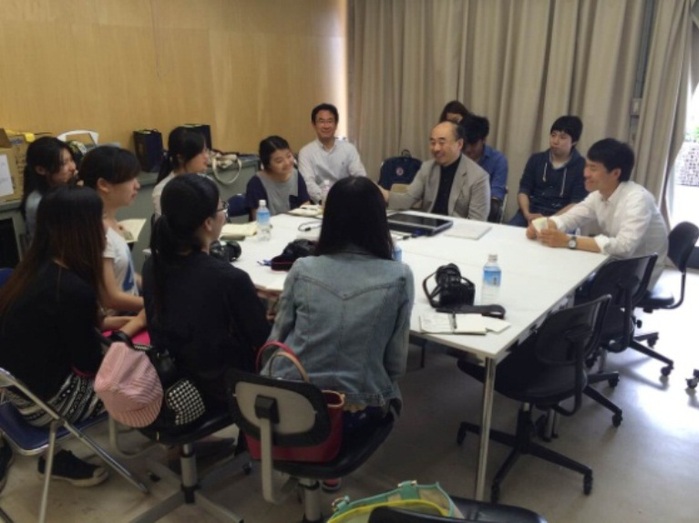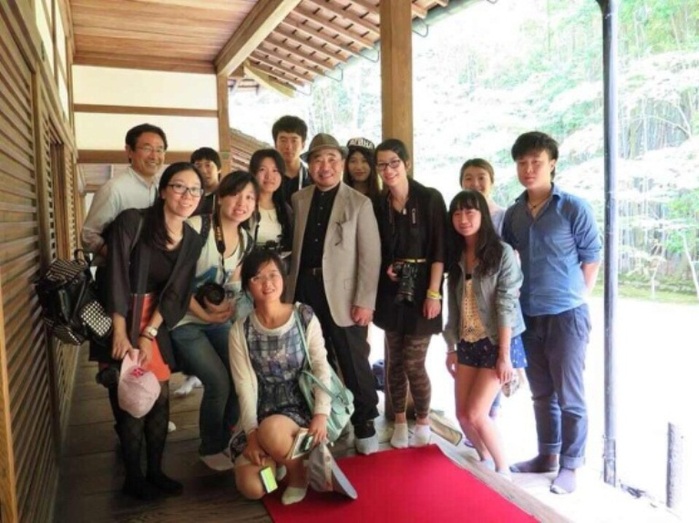Since Prof. Sasaki Yoji, the Japanese famous landscape master, conducted an academic communication to CAB in September last year, the Institute of Landscape Architecture has been maintaining close contact with Kyoto University of Art &Design. 8 students flied to Japan on June 18 for an academic communication about 8 days to look for long-term exchanges and cooperation.
During the trip, they visited many famous Japanese gardens and parks. In Osaka, they worshiped the earliest buddhist temple in Japan:Shitennoji Temple, which is regarded as Osaka's Buddhist altar, there are many activities held there every year; they also visited the Osaka Castle, which is composed of the majestic stone wall and after boarding the Osaka Castle Museum, we can see the whole city of Osaka. The Kasugataisha Shrine in Nara is a world cultural heritage, and the most famous Omotesando has a starting point of a red tori, with the towering fir and birch crowding primeval forest on both sides. There are also more than 2000 stone lanterns from donation in different sizes, and the Nara deer hiding in the woods; The Isuien Garden built in Meiji period is a very classic garden, which is composed of a front garden and a back yard , and the backyard is said to be a master piece in Meiji period. In Tokyo, the Imperial’s atmosphere gave them quite a shock, the Emperor Meiji helped them understand the Japanese culture of sacrifice, the Koishikawa Korakuen Garden brought them to peace and quietness, which is a typical Japanese urban oasis approach.
During the three days in Kyoto, they visited Kyoto University Of Arts And Design, Prof. Sasaki Yoji made academic lectures for them , expounding the concept of landscape from the actual cases. Prof. Sasaki Yoji focuses on the integration of traditional Japanese garden and modern garden; also, he pays more attention to detail and humane treatment. Students from both sides introduced their own design works, and exchange design concept freely.
After the lecture, Prof. Sasaki also took them to several typical courtyards in Kyoto, and answered their questions enthusiastically. Shisen-do is a quiet hermitage which was built by retired samurai Jozan Ishikawa. Jozan devoted the later part of his life to studies, mostly Chinese classics and garden architecture, and this garden was the embodiment which was influenced by traditional Chinese culture. Trimmed rhododendrons surround the courtyard which was decorated with hundreds of flowers, with the distant vistas looming, and a variety of trees and other vines and maple coordinate well, this garden shines quietly in the early summer. Koto-in, also known as ‘The Garden of Maple’, was the dry landscape garden without the sand and rock, but with contiguous moss and maple surrounded the garden in which situated a silent stone lanterns, reflecting Japanese Zen. Ryoanji is the most famous and celebrated garden in Japan. The garden itself is composed of fifteen stones in five groups, lying on an area of raked sand. Simply composed of stone and sand, it serves as a subtle yet effective example of the dry garden type. A simple interpretation of the stone arrangement is that from any point of view, there will be a rock hidden. Another simple interpretation of the stone arrangement is that the sand floor symbolizes sea waves, and the rocks symbolize islands. When watching the white sand, the green moss and the brown stone, visitors can find the point how the different color can match each other harmoniously.
After a few days’ communication, Prof. Sasaki expressed his willing to have a long-term cooperation and communicate regularly with each other, and looking forward to have more communication and interaction between students in the future.


